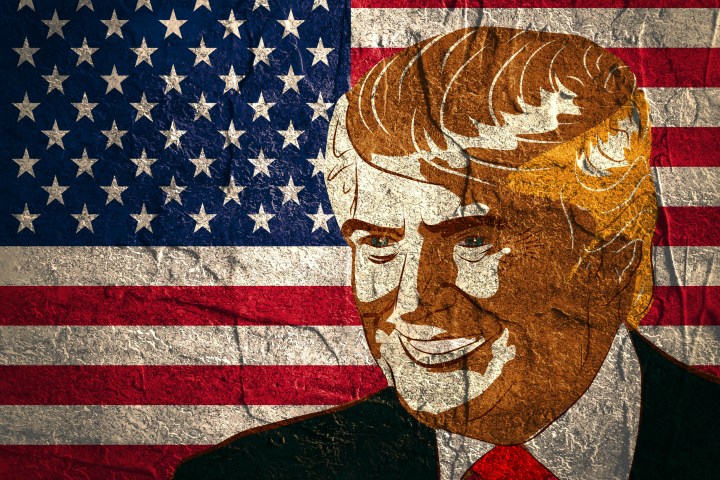
DeepDrumpf was created in March by Brad Hayes, an MIT Computer Science and Artificial Intelligence Laboratory (CSAIL) postdoc with a penchant for politics and neural networks. Back then, the Republican primaries were in full swing and Trump had established himself as a contender.
“Trump’s style of speech lends itself extremely well to these types of generative machine learning models.”
Hayes wanted to practice a machine learning technique called recurrent neural networks and came across an article that pointed out the simplicity of Trump’s vocabulary and sentence structure. He realized they’d be an ideal match.
“[Trump’s] style of speech lends itself extremely well to these types of generative machine learning models,” Hayes told Digital Trends. “Mostly because the models are nowhere near perfect, and require a lot of post-processing to clean up the output.” That is, the text created by these neural networks is often jumbled and inarticulate. “With Trump’s style of speaking, he often interrupts himself or goes on unrelated tangents, which is perfect for masking the kinds of errors one would typically see using these kinds of methods,” Hayes explains.
With just a few hours of the real estate mogul’s speech and debate transcripts, Hayes trained DeepDrumpf to generate tweets that read like the ridiculous relatives of those submitted by the real Trump.
“[This election is rigged],” DeepDrumpf recently tweeted. “I will give every American a solid gold nuclear weapon, we’re going to defeat the world.”
As the months passed, the Trump campaign defeated his peers and then gradually earned their respect. Nearly 250 tweets and 27,000 followers later, DeepDrumpf has become a comedic echo of an often boisterous campaign season. The bot no longer lampooned just another candidate — it mimicked the Republican nominee. Hayes thought he could capitalize off this for the greater good.
He announced DeepDrumpf’s bid for the presidency last week and asked supporters to make donations to the DeepDrumpf 2016 Victory Fund on GoFundMe, all of which will go toward GirlsWhoCode, a nonprofit that addresses the gender gap in STEM studies and helps teach programming skills to high school girls.
“I wanted to choose a non-political charity that focused on getting kids more involved in computer science, as DeepDrumpf seemed like a reasonable vehicle for getting people more interested in AI and machine learning,” Hayes says. “… benefiting an organization like GirlsWhoCode seemed to be a great way to do something positive for computer science while sending a clear message against Trump’s behavior.”
Although Hayes’ political views might seem obvious from that comment, he has purposely kept them private in prior coverage of DeepDrumpf. However, he told Digital Trends he intends to vote for Hillary Clinton.
Regardless, Hayes stressed the importance of voting. He added links to voter registration resources on the DeepDrumpf website.
Editors' Recommendations
- Next presidential debate will be virtual, but Trump says no
- Conspiracy theories already spreading ahead of Trump-Biden presidential debate
- Facebook reportedly considering ‘kill switch’ if Trump contests 2020 elections
- Twitter says it won’t fact-check Trump’s latest mail-in voting tweets
- Revisiting the rise of A.I.: How far has artificial intelligence come since 2010?

